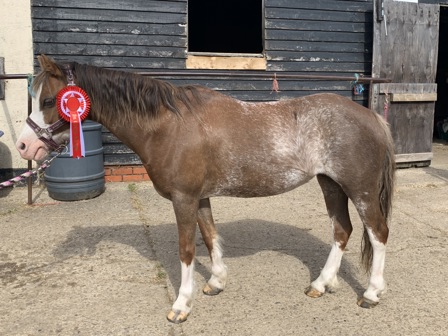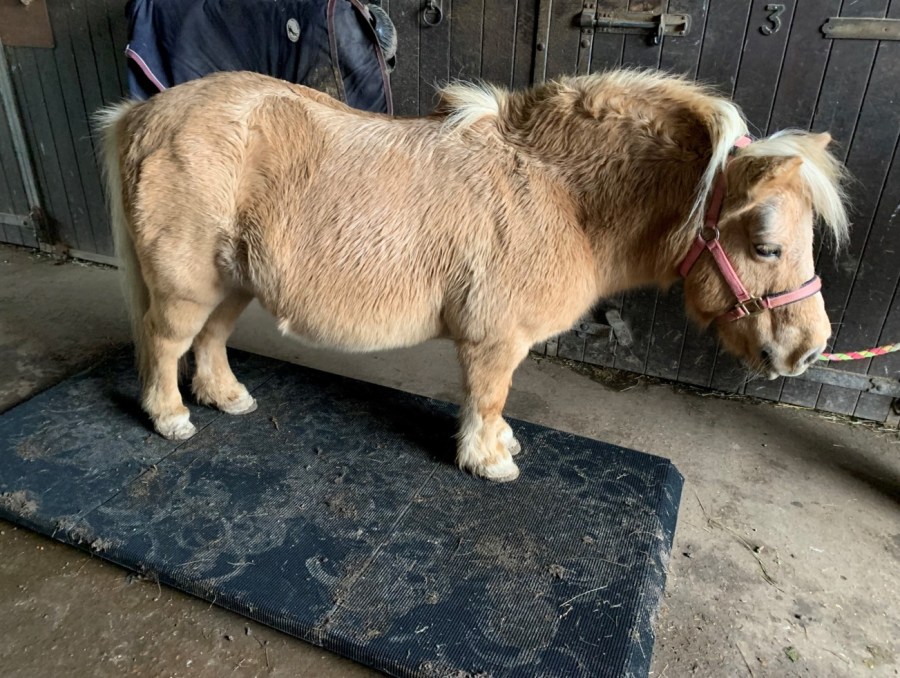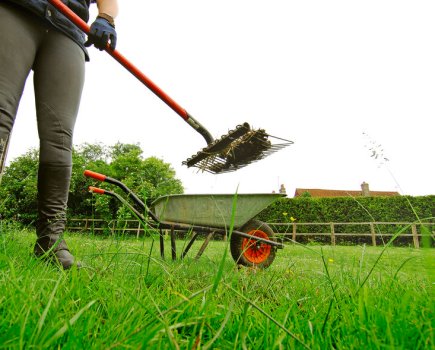Maintaining a healthy weight can be one of the most challenging parts of taking care of a horse. Worryingly, 50% of horses in the UK are reported to be overweight or obese, with this figure creeping up to 70% in some native pony breeds. At the BHS, we work with a significant number of horse owners and carers who are struggling to keep their horse at a healthy weight.
Excess weight gain can be a contributing factor to equine metabolic syndrome (EMS), laminitis, arthritis, and soft tissue injuries. In fact, equine obesity can more than double the risk of laminitis, which will cause significant pain and lameness. EMS is similar to type two diabetes in humans. It can also increase a horse’s risk of laminitis.
This was a real worry when we met veteran Shetland pony Diamond at a BHS Horse Health Day, as she was very overweight (pictured above).
The 22-year-old mare’s weight loss journey led to her shedding 30kg, completely transforming her health (and life) in the process. I’ll come back to her story later.
A big difference
While excess weight on a horse can be down to a number of reasons, we often identify diet and exercise as being the main contributing factors.
It is hard to strike the right balance. Many of our horses have access to quality grazing all year round and are exposed to milder winters, with additional rugging and stabling. This year has been exceptionally challenging in the UK, with the amount of rain we have had coupled with trying to manage pasture and turnout.
The resulting factor is that our horses don’t have to use as much energy to keep warm. So when they are also consuming plenty of calories, it is easy for weight to increase because they aren’t burning enough off.
During a typical BHS Horse Health Day, where we visit different establishments such as livery yards or riding schools, I work directly with each horse’s owner or carer.
First I get to know the owner and their horse by asking questions such as the horse’s age, if the horse is in work and what their current management routine is.
I then weight the horse on a weigh bridge and also with a weigh tape. Interestingly, I’ve seen a big difference of between 1kg and 100kg in weight measurements for the same horse when they are weighed on a bridge and with a tape.
Fat or muscle?
The next stage is to demonstrate how to fat score (also known as body condition scoring) the horse, and encourage owners/carers to get hands on and feel the different areas prone to storing fat. I’ve found this to be a valuable tool, because it enables people to confidently assess their horse’s weight at any time.
This overall assessment allows my team to determine if the horse is a healthy weight, underweight or overweight. We can then advise owners or carers on tailored steps they should take to support their horse’s weight.
Best practice is for owners/carers to fat score their horse every two weeks. There are three key areas to consider: neck, middle and hindquarters.
You will need to get hands on and touch the horse to determine whether you are feeling muscle or fat.
Fat will feel spongy whereas muscle is firmer. However, dangerous crest fat on the neck can start to feel hard and become difficult to move from side to side. If a horse is underweight, the skeletal points on the horse will be more visible and easier to feel, and the neck is often weaker.
We are what we eat
We are what we eat and the same can be said for horses. I talk to owners about feed and forage, along with the horse’s current grazing routine.
There are several things that we recommend, depending on the horse and the owner/carer’s circumstances. This includes:
- Weighing all feed and forage to help ensure the horse is being provided with the right amount they need.
- Soaking hay to reduce its calorie content.
- Feeding a low-calorie forage.
- Discuss if a feed is needed at all. Often, a balancer or vitamin and mineral supplement will be sufficient for the overweight horses that we assess.
- Using small-holed haynets or trickle feeders to make a horse’s forage ration last longer.
With all of the above advice, I always recommend that any changes to the diet are made gradually to avoid upsetting a horse’s delicate digestive system.
Positive conversations
We also have conversations with owners/carers about restricted grazing, whether that be by using electric fencing to strip graze, setting up a track system or by using a grazing muzzle.
To rug or not to rug is a question we often address too. It can be easy to over-rug a horse, particularly if they need to lose weight. Instead of unused calories being laid down as excess fat, the horse will benefit from using the calories to keep warm.
I’ve had some really positive conversations at our BHS Horse Health Days. It is great to be able to support so many horse owners and carers with a targeted weight management plan for their horse.
There is a secondary challenge when it comes to weight management. It’s not always easy when you see your horse every day to recognise if they have gained weight. It can also be difficult to recognise what a healthy body looks like.
I meet owners and carers who measure weight with weigh tapes, but they can only provide a guideline and may produce significantly varied results. Taking photos of your horse from the side and a safe distance behind the hindquarters every 2-3 weeks will provide another method of monitoring any weight changes.
Shetland’s 30 kilo weight loss

Shetland pony Diamond lost 30kg in weight after being assessed at a BHS Horse Health Day
Weight loss needs to be achieved through a carefully planned programme. This starts with knowing the accurate weight of the horse.
By taking measurements at a BHS Horse Health Day, we’ve also been able to produce some great before and after comparisons. There is nothing more rewarding than seeing a horse again and the brilliant improvements they have made by losing weight.
One pony that stands out for my team and I is Diamond. When BHS Horse Care & Welfare Field Officer Dawn was first introduced to the Shetland pony in 2022, there was no doubt that she was a happy, well-loved pony.
Like many Shetlands, however, Diamond had a good appetite and was carrying too much weight (see main image, top of page).
After assessing the mare on the weigh bridge, Dawn advised the proprietor and yard manager on the best steps to take going forward. On a return visit, we were so pleased to see that she had lost a total of 30kg (see inset image, above).
At 22 years old, this is a positive result for Diamond and we are thrilled to continue to hear about her weight loss journey, in particular her new found love for loose schooling over poles.
In great shape

Healthy weight: Pollyanna receives an ‘In Great Shape’ rosette
Prevention through education, support and learning is something we strongly believe in at the BHS. This includes investing in, and engaging with, people from a young age.
Along with BHS Horse Health Days, we run sessions at riding club and Pony Club camps, which comprise of presentations and fun interactive games such as ‘guess the weight of the pony’.
We don’t want people to feel daunted by the topic of weight management and as a team we understand the different challenges faced by owners or carers. As I said, it is not an easy thing to manage and every single horse’s journey is unique.
I think a nice touch is that we hand out ‘In Great Shape’ rosettes to horses that are assessed as having a healthy fat score.
There have been some really lovely exchanges with those owners/carers who have been presented with a rosette. Being part of initiatives such as this one really reminds me of just how special my job is, as well as the work we get to do every day to improve the lives of horses.
Find out more about the British Horse Society’s Horse Care and Welfare team.
![]() Have you heard about Your Horse’s #FitNotFat campaign? Equine obesity is an enormous welfare problem and we’re on a mission to provide owners and riders with the knowledge, skills and information you need to keep your horse in tip-top health. It could be life saving! Find out more
Have you heard about Your Horse’s #FitNotFat campaign? Equine obesity is an enormous welfare problem and we’re on a mission to provide owners and riders with the knowledge, skills and information you need to keep your horse in tip-top health. It could be life saving! Find out more









